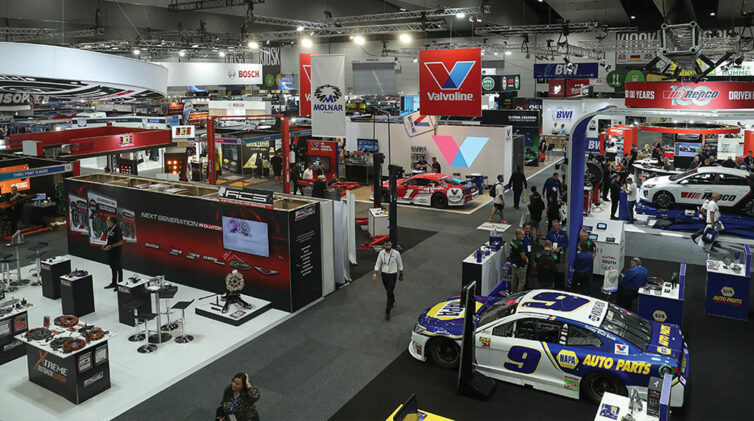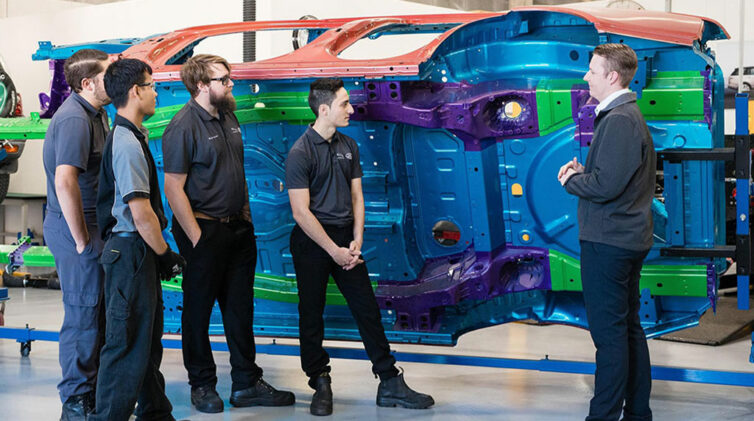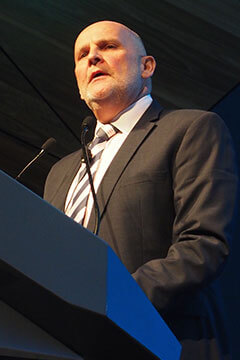
Time to connect: FCAI and Toyota Australia president Dave Buttner talking at the ITS World Congress in Melbourne this week.
STATE and federal governments could prevent Australia from achieving the potentially huge gains in safety, efficiency and environmental effects if they fail to work to a common goal, according to the head of the country’s largest car-maker and distributor.
“This challenge is similar to creating a standard-gauge railway, except in the digital space,” Federal Chamber of Automotive Industries (FCAI) president Dave Buttner told the 23rd ITS World Congress in Melbourne this week. “We must have commonality of purpose and integration right around the country to optimise this great opportunity.”
Mr Buttner, who is also president of Toyota Australia, said the integration of connected vehicle systems and automated vehicles into the transport network in the coming years would require close co-operation by the top two tiers of government.
“From a policy framing perspective, in order to extract the best outcomes from a co-operative intelligent transport systems (CITS) environment, federal and state governments need to adopt a collaborative approach.
“This collaboration needs to ensure the many different policy aims are balanced, balanced with the imperative of ensuring that this emerging field of technology and mobility flourishes within the Australian marketplace. For that we need an integrated approach.”

The importance of getting it the right first time is reflected in the fact that vehicles and freight are so deeply embedded in the national economy, according to Mr Buttner.
“Since it impacts in so many areas where standards apply – vehicles, operation and the environment – all states and territories will need to agree on a common framework. Policy makers need to be mindful that, at its zenith, CITS will impact our everyday lives in much the same way as our hand-held digital communication network does today and, of course, plan accordingly.”
Mr Buttner said some progress had been made by Austroads, an association including Australian and New Zealand transport authorities, and by the National Transport Commission which have produced an ITS roadmap and a national policy framework for land transport technology respectively.
“Obviously, there are many forward thinking people collaborating on this subject, knowing that a lack of high-level co-operation will only delay the deployment of ITS as well as the realisation of its future potential benefits,” Mr Buttner said.
He said the vehicle manufacturers were pushing ahead with automated vehicle development and forecasts, such as those from Ford and BMW predicting they would each have driverless cars on international roads by 2021.
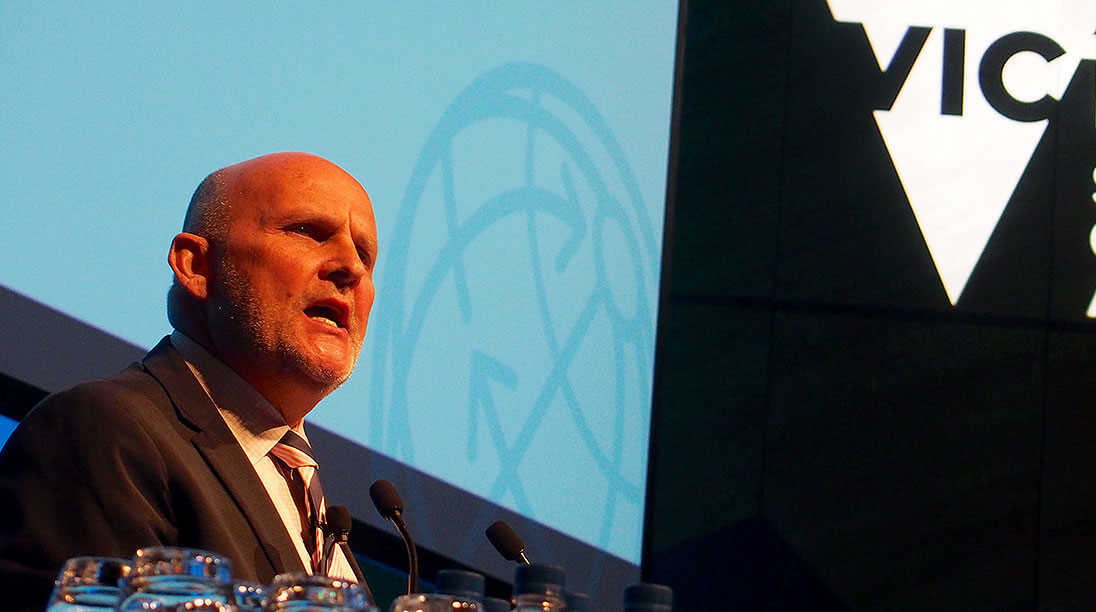
Dave Buttner
However, several of the safety systems that will be incorporated into automated cars in the future are already available, including autonomous emergency braking (AEB), Subaru’s EyeSight warning system and Mercedes-Benz’s intelligent drive system, just to name a few.
He said Toyota had announced plans to invest $1 billion for research into intelligence and robotics in a new facility in Silicon Valley, California.
“It is significant to note that the new CEO of this facility is Dr Gil Pratt, a program manager from the Defence Advanced Research Projects Agency (DARPA) in the US, where so many autonomous vehicle projects have been conceived.”
It was DARPA that ran two automated vehicle contests offering significant prizes in 2004 and 2005.
Mr Buttner said Australia also had an opportunity to “ride this technological wave” as CITS trials develop from small to large scale and beyond.
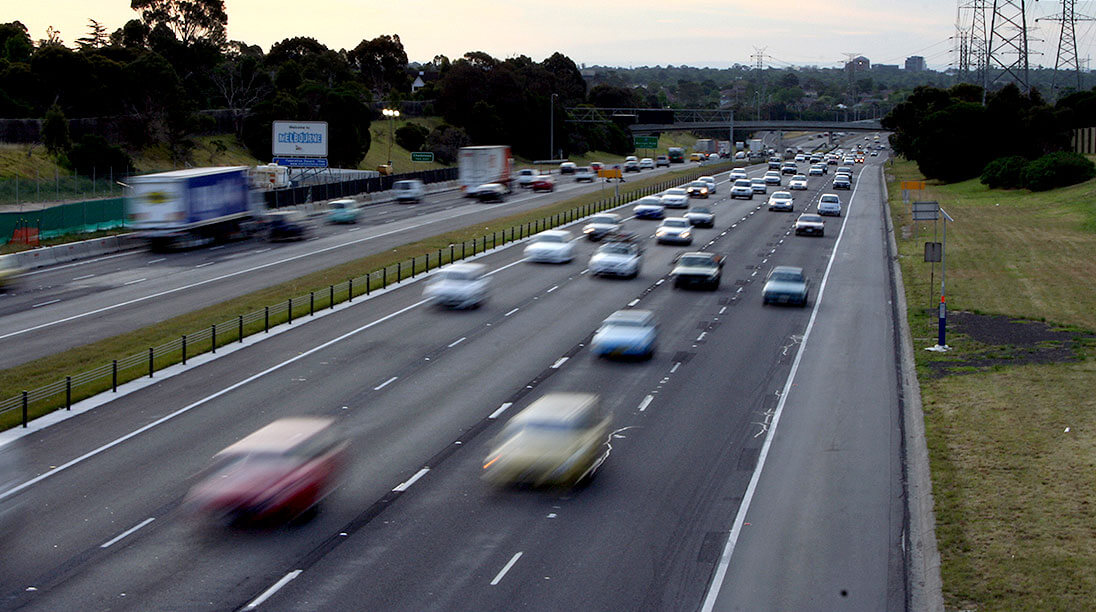
But he said the Australian automotive industry believed there were five key points that needed to be achieved if Australia was to maximise its opportunity.
The first was to strive for consistency with other markets, as with the adoption of the 5.9gH spectrum for ITS communications.
Second, learn from the trials and activities in other major markets and try not to reinvent the wheel.
Third, finalise the national updated ITS policy framework, ensuring all key stakeholders achieve consensus. This will give industry the stability to undertake long-term strategic planning.
Fourth, obtain support from government for proper co-ordinated technical trials and ensure these trials focus on implementing CITS while dealing with any unique local issues.
Last and most important, governments need to achieve national consistency.
By Ian Porter
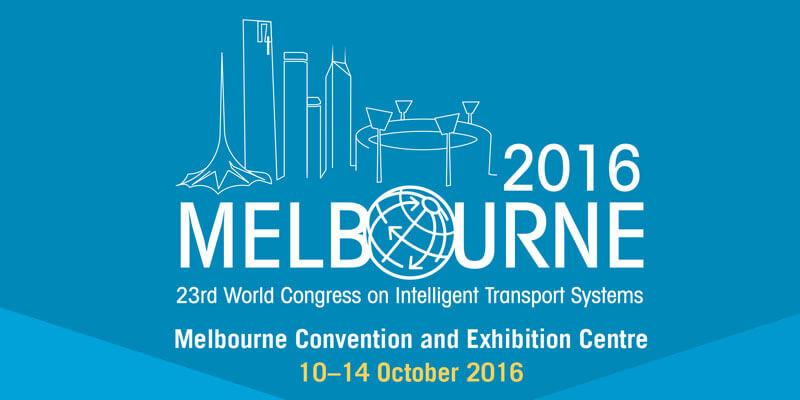












 Read More: Related articles
Read More: Related articles